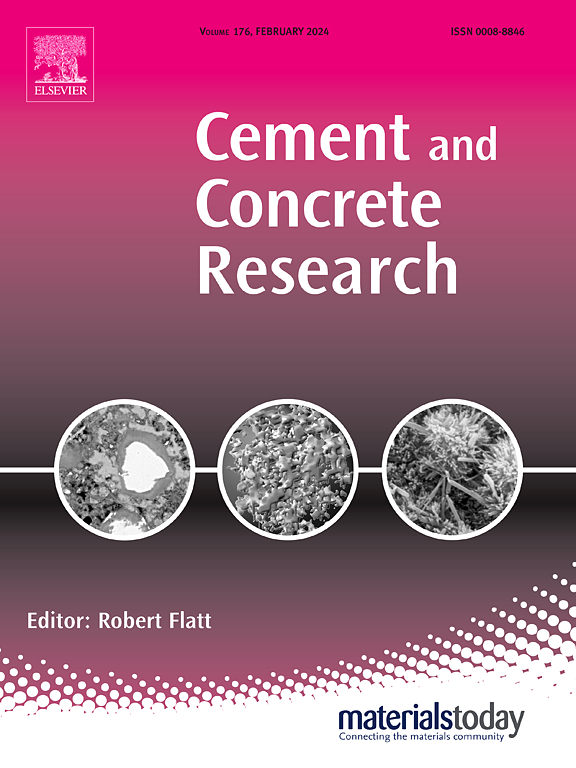Hydrogel-guided dispersion strategy for enhancing the toughening efficiency of liquid polymers in cement paste
IF 10.9
1区 工程技术
Q1 CONSTRUCTION & BUILDING TECHNOLOGY
引用次数: 0
Abstract
The toughening efficiency of liquid polymers (LP) for cement-based materials is usually constrained by their agglomeration and discontinuous dispersion in matrix. In this study, a novel hydrogel-guided dispersion strategy was developed, in which the incorporation of 3.0 wt% hydrogel enabled the uniform distribution of 10.0 wt% LP within cement matrix as a continuous network. Accordingly, the flexural strength, toughness and fracture energy of LP cement paste were increased by 108 %, 445 % and 31 %, respectively. Besides, the failure behavior of LP cement paste was changed from brittleness to progressive failure behavior that preserved material integrity, in which the strength remained stable as strain rose from 10 % ∼ 40 %. Moreover, the applicability of this strategy for various LP was verified by expanding the experimental mixtures to 26 groups. A Bayesian optimization-based support vector regression (SVR) model was employed to clarify the contributions of cement, various LP, and hydrogel to mechanical development within the multivariate system. In conclusion, this study proposed a novel strategy to enhance the toughening effect of LP, and provided valuable insights for designing polymer-cement composites using machine learning.
水凝胶导向分散策略提高水泥浆体中液体聚合物的增韧效率
液体聚合物对水泥基材料的增韧效果通常受到其在基体中的结块和不连续分散的限制。在这项研究中,开发了一种新的水凝胶导向分散策略,其中加入3.0 wt%的水凝胶可以使10.0 wt%的LP均匀分布在水泥基质中,形成一个连续的网络。相应的,LP水泥浆体的抗折强度、韧性和断裂能分别提高108%、445%和31%。此外,LP水泥浆体的破坏行为从脆性转变为保持材料完整性的渐进式破坏行为,当应变从10% ~ 40%上升时,强度保持稳定。此外,通过将实验混合物扩大到26组,验证了该策略对各种LP的适用性。采用基于贝叶斯优化的支持向量回归(SVR)模型来阐明水泥、各种LP和水凝胶对多变量系统中力学发展的贡献。总之,本研究提出了一种增强LP增韧效果的新策略,并为利用机器学习设计聚合物-水泥复合材料提供了有价值的见解。
本文章由计算机程序翻译,如有差异,请以英文原文为准。
求助全文
约1分钟内获得全文
求助全文
来源期刊

Cement and Concrete Research
工程技术-材料科学:综合
CiteScore
20.90
自引率
12.30%
发文量
318
审稿时长
53 days
期刊介绍:
Cement and Concrete Research is dedicated to publishing top-notch research on the materials science and engineering of cement, cement composites, mortars, concrete, and related materials incorporating cement or other mineral binders. The journal prioritizes reporting significant findings in research on the properties and performance of cementitious materials. It also covers novel experimental techniques, the latest analytical and modeling methods, examination and diagnosis of actual cement and concrete structures, and the exploration of potential improvements in materials.
 求助内容:
求助内容: 应助结果提醒方式:
应助结果提醒方式:


